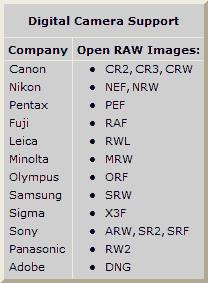Nov 27, 2019 Windows Shell Extension Download (1.3MB) The Shell extension is included with the Windows Installer. An optional add-on for Windows that allow.
Art Files 3.2 0
Art Text is a text design tool that can be used to create all manner of text based graphics - from graphics for a web site and company logos, to icons and headings. With more than 300 templates to choose form, if you're stuck for ideas you're sure to find something to inspire you.
You also have more than 600 vector shapes that can be incorporated into your graphics along with hundreds of textures and materials that can be used to bring your designs to life. If you cannot find something you like, you can use the integrated material editor to create something of your own.
There are 100 fonts available and Art Text offers support for layers which allows for the creation of complex graphics. The text you add to your designs can be manipulated in a variety of ways and there are 22 vector transformations and Bezier splines to choose from.
Your creations can be exported to a range of formats including TIFF, JPEG, PDF, EPS, GIFF, and PNG so whatever sort of project you are working on, Art Text can supply the graphics you need.
What's new in Art Text v3.2.2
Solved the problem with “Fit/Resize to Document” for 2D objects.
Fixed an issue with opening version 2 documents.
Improved LinkBack support.
Fixed the problem with Font dialog size.
Enhanced overall program stability.
Art Text is a surprisingly powerful text designer which feels more like a mini-image editing tool - highly impressive.
Emmet Re:view 2.1.5 for Chrome
Freeware
See how responsive websites look on different devices
Artboard 2.0.4
Trial Software
Create your own vector graphics with this low cost app
All changes are recorded in the preview window, which for convenience is divided into 2 parts: before and after the changes. Franzis denoise projects professional 1.21.02653 crack software. B there is this possibility.There are also functions for changing the color space and changing the white balance. All this is naturally displayed in real time.
RapidWeaver 7.2
Trial Software
Apr 14, 2016 Version 1.6 (1.5.2): Note: The downloadable demo is version 1.5.2; the version available for purchase on the Mac App Store is version 1.6. The folder that contains the files in your groups is now called 'All Your Desktop Groups Files' instead of just 'Desktop Groups' so that it shows up at the top in Finder for easier access. Trusted Mac download Desktop Groups 1.6. Virus-free and 100% clean download. Get Desktop Groups alternative downloads. Dec 11, 2019 Lists well-known security identifiers in Windows operating systems. Also lists additional built-in groups that are created when a domain controller is added to the domain. S-1-5-2: Network: A group that includes all users that have logged on through a network connection. Membership is controlled by the operating system. Desktop groups 1.5.2.
Design, build and publish your own website using this superb tool

LogoSmartz 8.0
Trial Software
Build stylish and professional logos in minutes with this powerful design tool
Memonic 2.1.3
Freeware
Capture data, share information and organise your research in this handy note taking tool
ImBatch 6.9.0
Free, for personal-use only
Convert, resize, rotate, rename and otherwise process an entire folder of images in a single operation
StaxRip 2.0.8.0
Open Source
Convert just about any video into MP4 with this very configurable tool
Spotify 1.128
Freeware
How To Open .art Files Without Aol
Stream audio tracks from the Internet for free
MusicBee 3.3.7367
Freeware
https://omgopti.netlify.app/adobe-dng-converter-121-crack.html. You can use it with Photoshop, After Effects, Illustrator, Audition, and other products. Premiere Pro comes with Adobe OnLocation and Adobe Encore. Premiere Pro has the capability to process videos up to 10240 x 8192 with plugin system to support all the media formats and enhance the functionality of the application. This wonderful application provides the GPU acceleration feature to process videos with ultimate performance.You can view the results without rendering them, speed up the whole process, and provides the options to control the framerate, aspect ratio, and media channels.
Skypass companion 1 9 download. Manage your entire music collection with one handy app


Adobe Flash Player for Internet Explorer 32.0.0.344
Freeware
Show and play Adobe Flash content through Internet Explorer
This module will illustrate how you can combine files in Stata. Examples will include appending files, one to one match merging, and one to many match merging.
Appending data files
When you have two data files, you may want to combine them by stacking them one on top of the other. For example, we have a file containing dads and a file containing moms as shown below.
Surviving mars (2018). If we wanted to combine these files by stacking them one atop the other, we can use the append command as shown below.
We can use the list command to see if this worked correctly.
The append worked properly… the dads and moms are stacked together in one file. But, there is a little problem. We can’t tell the dads from the moms. Let’s try doing this again, but first we will create a variable called momdad in the dads and moms data file which will contain dad for the dads data file and mom for the moms data file. When we combine the two files together, the momdad variable will tell us who the moms and dads are.
Here we make momdad variable for the dads data file. We save the file calling it dads1.
Here we make momdad variable for the moms data file. We save the file calling it moms1.
.art Files Viewer
Now, let’s append dads1 and moms1 together.
Now, when we list the data the momdad variable shows who the moms and dads are.
Match merging
Another way of combining data files is match merging. Say that we wanted to combine the dads with the faminc data file, having the dads information and the family information side by side. We can do this with a match merge.
Let’s have a look at the dads and faminc file.
We want to combine the data files so they look like this.
Notice that the famid variable is used to associate the observation from the dads file with the appropriate observation from the faminc file. The strategy for merging the files goes like this.
1. sort dads on famid and save that file (calling it dads2).
2. sort faminc on famid and save that file (calling it faminc2).
3. use the dads2 file.
4. merge the dads2 file with the faminc2 file using famid to match them.
Here are those four steps.
1. Sort the dads file by famid and save it as dads2
2. Sort the faminc file by famid and save it as faminc2.
3. Use the dads2 file
4. Merge with the faminc2 file using famid as the key variable.
It seems like this worked just fine, but what is that _merge variable?
The _merge variable indicates, for each observation, how the merge went. This is useful for identifying mismatched records. _merge can have one of three values
1 – The record contains information from file1 only (e.g., a dad2 record with no corresponding faminc2 record.
2 – The record contains information from file2 only (e.g., a faminc2 record with no corresponding dad2 record.
3 – The record contains information from both files (e.g., the dad2 and faminc2 records matched up).
When you have many records, tabulating _merge is very useful to summarize how many mismatched you have. In our case, all of the records match so the value for _merge was always 3.
One-to-many match merging
Another kind of merge is called a one to many merge. Our one to one merge matched up dads and faminc and there was a one to one matching of the files. If we merge dads with kids, there can be multiple kids per dad and hence this is a one to many merge.
As you see below, the strategy for the one to many merge is really the same as the one to one merge.
1. sort dads on famid and save that file as dads3
2. sort kids on famid and save that file as kids3
3. use the dads3 file
4. merge the dads3 file with the kids3 file using famid to match them.
The 4 steps are shown below.
1. Sort the dads data file on famid and save that file as dads3.
2. Sort the kids data file on famid and save that file as kids3.
3. Use the dads3 file.
4. Merge the dads3 file with the kids3 file using famid to match them.
Let’s list out the results.
The results are a bit easier to read if we sort the data on famid and birth.
As you see, this is basically the same as a one to one merge. You may wonder if the order of the files on the merge statement is relevant. Here, we switch the order of the files and the results are the same. The only difference is the order of the records after the merge.
Summary
Appending data example
Match merge example steps (one-to-one and one-to-many)
Match merge example program
Comments are closed.